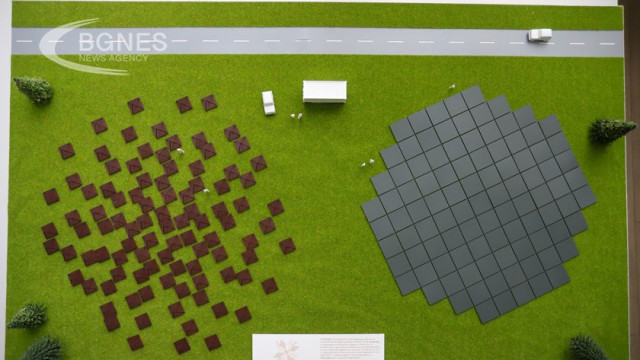The Bulgarian station of the radio telescope - LOFAR-BG, will be built by the end of 2025 in the immediate vicinity of the National Astronomical Observatory - Rozhen.
This was stated in an interview for BGNES by the astronomer Assoc. Dr. Kamen Kozarev from the Institute of Astronomy with the National Astronomical Observatory (IA with NAO) of the Bulgarian Academy of Sciences (BAS).
LOFAR is a pan-European radio telescope that is extremely flexible in its capabilities and one of the most advanced radio telescopes observing the Universe at the lowest frequencies available from the Earth's surface.
With the Bulgarian scientist, we talk about the ultra-modern LOFAR telescope and the station that will be built in our country, as well as the approval by the European Commission (EC) for the creation of LOFAR ERIC (European Research Infrastructure Consortium), in which Bulgaria is a full founding member.
Such stations already exist in several countries in Europe. "All the individual observatories can also function as standalone radio telescopes, and they can also work together. "This is the great strength of the LOFAR telescope, that all these stations, working together, create one huge interferometer the size of the entire continent of Europe, which allows for great resolution of the images and the observations that are made," explained the astronomer.
Work on LOFAR-BG begins in early 2020, with the project included in the National Roadmap for Scientific Infrastructure of Bulgaria and enjoying the financial support of the state.
The Bulgarian station of the LOFAR telescope will be built in close proximity to the Rozhen Observatory. The land has been purchased, and the infrastructure is being built. The station will consist of 192 antennas and will be the size of a football field.
Its construction will cost about 3 million euros. And the value of the entire project is about BGN 13 million. When ready, it will be able to make observations at frequencies between 10 and 250 MHz, and will be able to perform various scientific tasks.
The highly versatile LOFAR telescope can be used to observe targets, objects both very far away in the young Universe and very close to Earth.
Scientists will be able to observe distant galaxies, active galaxies and quasars. They will be looking for the first stars that ever shone in the universe many billions of years ago. Observations will be made of solar activity, pulsars, the Earth's ionosphere, lightning, etc.
"This telescope, unlike most astronomical instruments, can be used to observe very bright targets and objects, as well as very faint and distant ones," the astronomer said.
Bulgaria's participation in LOFAR ERIC gives Bulgarian astronomers the opportunity to collaborate with scientists from different countries, including Great Britain, France, Ireland, Germany, Poland, and the Netherlands. The telescope stations are currently 52 in number, most of them concentrated in the Netherlands.
"There is the largest number of stations, and separately there are stations in other countries, as will be the case in Bulgaria. At the moment, the construction of a station in Italy is also planned, so this consortium and this community is growing", said the Bulgarian scientist, who hopes that this will continue.
Bulgaria is also the first country in the Balkans to have such a station. The scientist hopes that the project will be able to attract astronomers from neighboring countries to further develop radio astronomy.
"Our primary observational target at the Institute of Astronomy is the Sun, as we have a fairly strong solar activity group and we hope to use, and already use, data from the LOFAR radio telescope to study active processes on the surface and in the corona of the sun," he noted.
When asked how many people are expected to work at the Bulgarian station when the project is completed, Associate Professor Kozarev answered: "At the moment, we are working with about 6 people. But in 2023, we had several radio astronomy schools, which were quite well attended by students and doctoral students from Bulgaria and the region - over 20 people at each of the schools."
Radio astronomy internships are also planned in 2024, and there is already interest from students from Sofia University. "I hope to slightly increase the number of people who would work, and I also hope that our fellow astronomers in Bulgaria recognize the opportunity to use these unique observations, so that we further increase the number," the astronomer emphasized.
Prof. Kozarev is adamant that astronomy is a really great science, from which something new and different is learned every day.
“Astronomy is also the oldest science, there is a lot of romance in it, but there are also many practical things. I think our institute is very cleverly entering the 21st century with the development of technology, machine learning, etc. We plan to use all these technologies, to develop additional technologies related to radio astronomy", he pointed out, adding that they have quite successfully partnered with the Technical University in Sofia and have joint plans for the development of radio astronomy equipment. And the next goal is to install radio astronomy equipment at the Bulgarian polar base on Livingstone Island at the end of 2024. /BGNES







